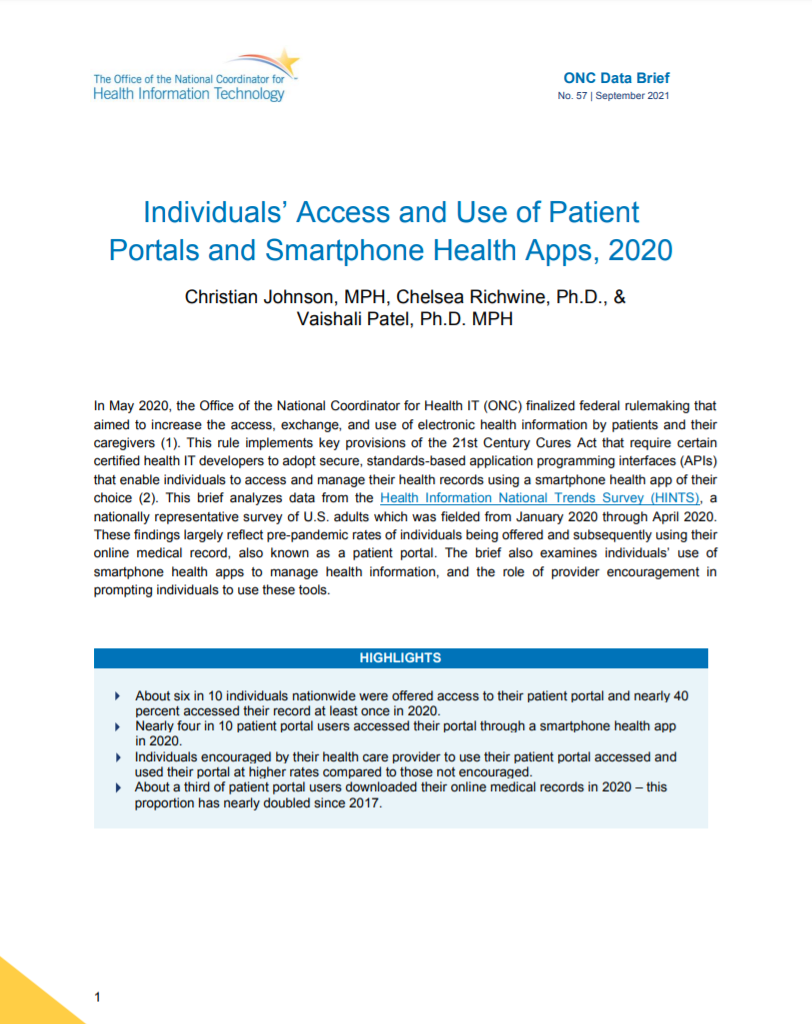
In May 2020, the Office of the National Coordinator for Health IT (ONC) finalized federal rulemaking that aimed to increase the access, exchange, and use of electronic health information by patients and their caregivers (1). This rule implements key…
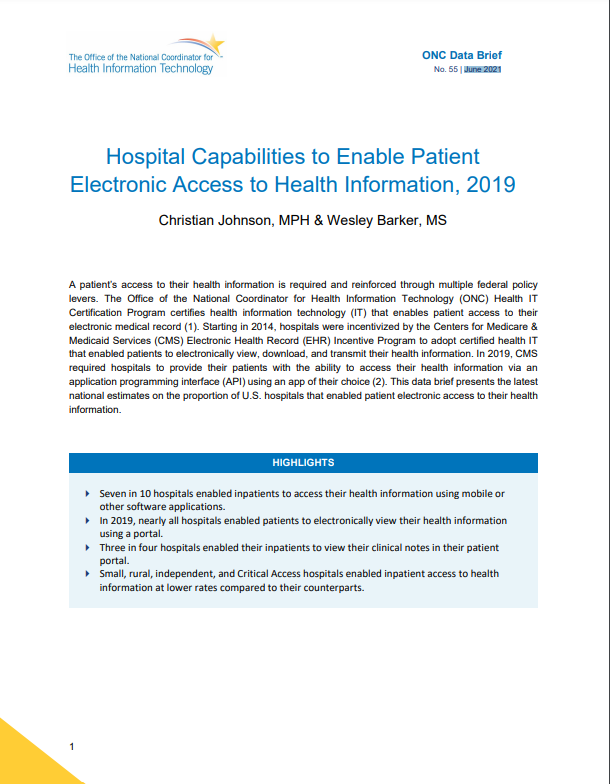
A patient’s access to their health information is required and reinforced through multiple federal policy
levers. The Office of the National Coordinator for Health Information Technology (ONC) Health IT
Certification Program certifies health…
![Variation in Methods for Health Information Management among U.S. Substance Abuse Treatment Centers, 2017 [pdf]](/sites/default/files/2021-07/substance-abuse-treatment-center-health-information-management-2017.png)
More than 20 million Americans suffer from a substance use disorder (SUD) each year. For these individuals, treatment is designed to help stop or reduce harmful substance misuse, improve health and social function, and manage risk for relapse.…
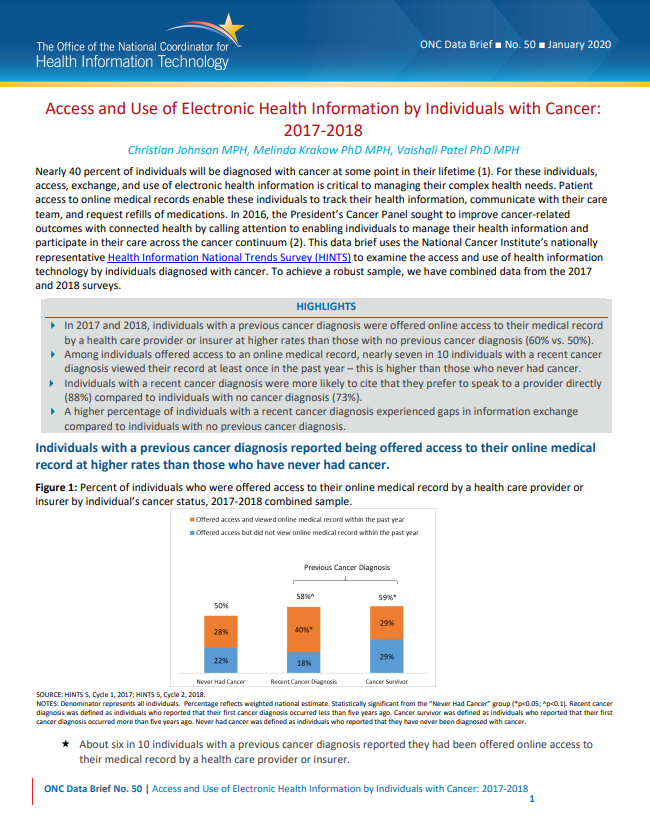
Nearly 40 percent of individuals will be diagnosed with cancer at some point in their lifetime. For these individuals, access, exchange, and use of electronic health information is critical to managing their complex health needs. Patient access to…
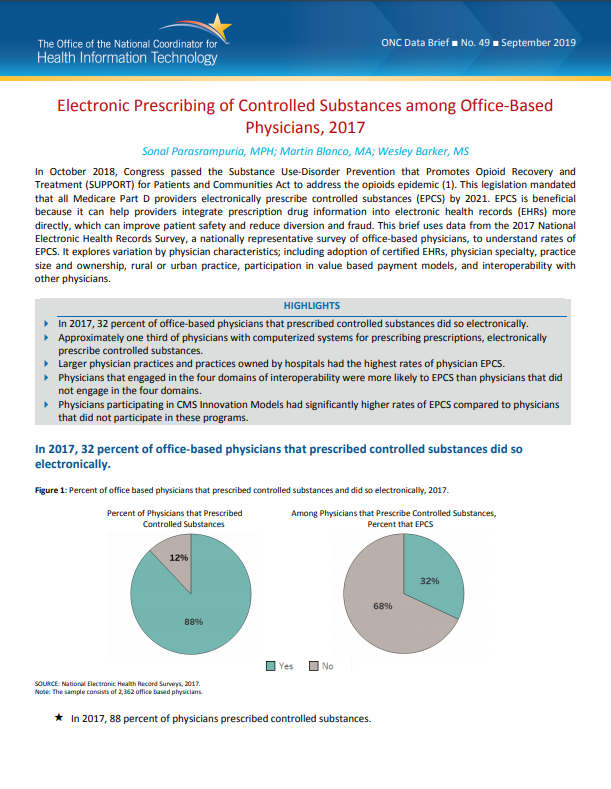
EPCS is beneficial because it can help providers integrate prescription drug information into electronic health records (EHRs) more directly, which can improve patient safety and reduce diversion and fraud. This brief uses data from the 2017…
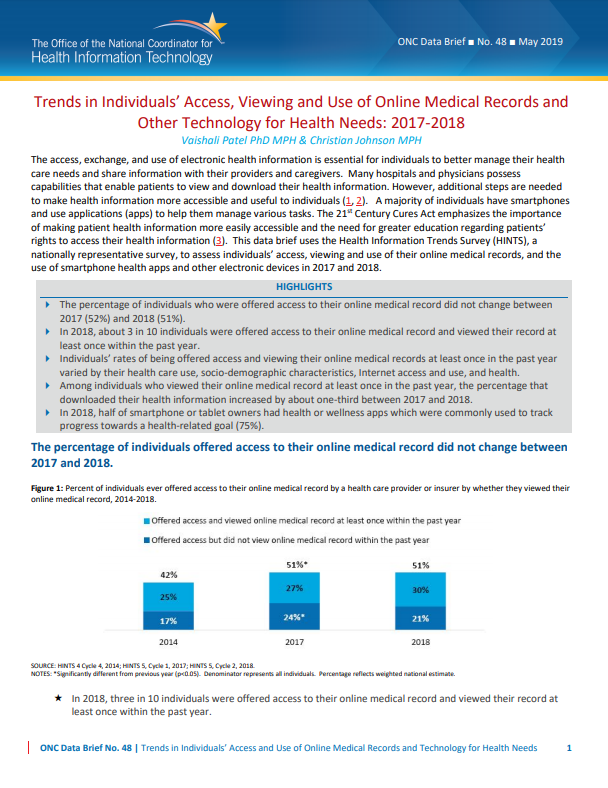
The access, exchange, and use of electronic health information is essential for individuals to better manage their health care needs and share information with their providers and caregivers. Many hospitals and physicians possess capabilities that…

With widespread adoption of EHRs, policy is now shifting towards the use of EHR data. EHR data can improve patient care by giving providers access to evidence based tools that assist with decision making and facilitating clinical practice by…
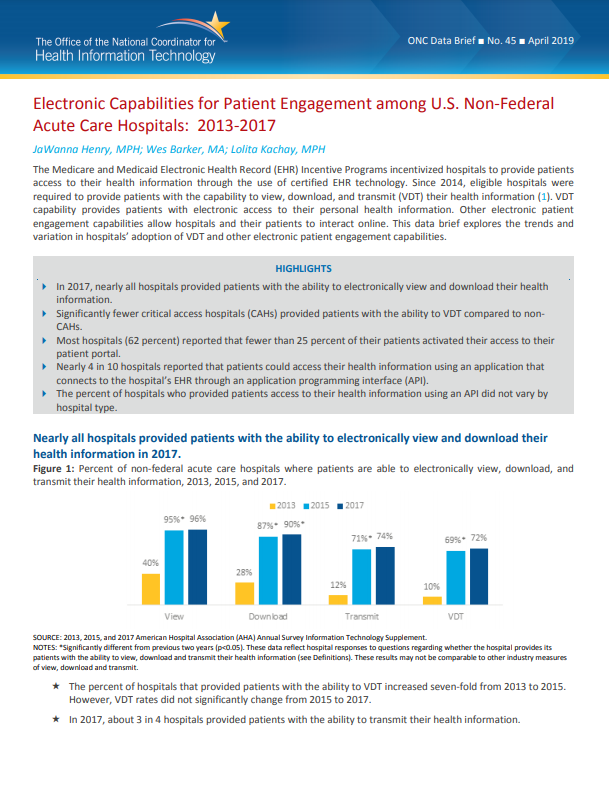
The Medicare and Medicaid Electronic Health Record (EHR) Incentive Programs incentivized hospitals to provide patients access to their health information through the use of certified EHR technology. Since 2014, eligible hospitals were required to…
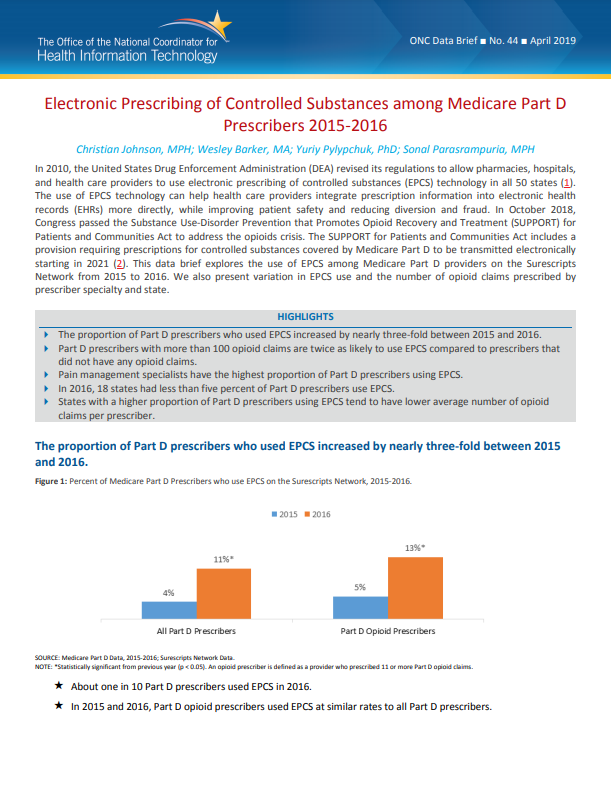
The use of EPCS technology can help health care providers integrate prescription information into electronic health records (EHRs) more directly, while improving patient safety and reducing diversion and fraud. In October 2018, Congress passed the…
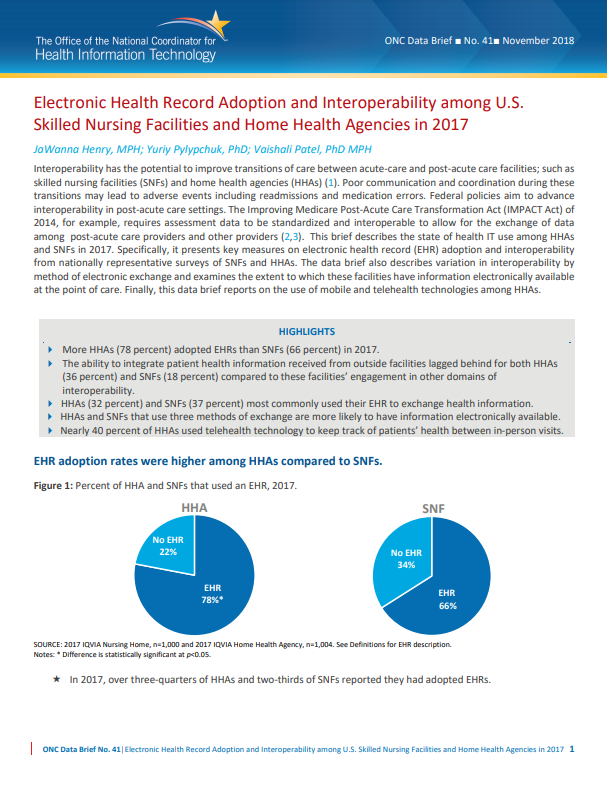
This brief describes the state of health IT use among HHAs and SNFs in 2017. Specifically, it presents key measures on electronic health record (EHR) adoption and interoperability from nationally representative surveys of SNFs and HHAs. The data…
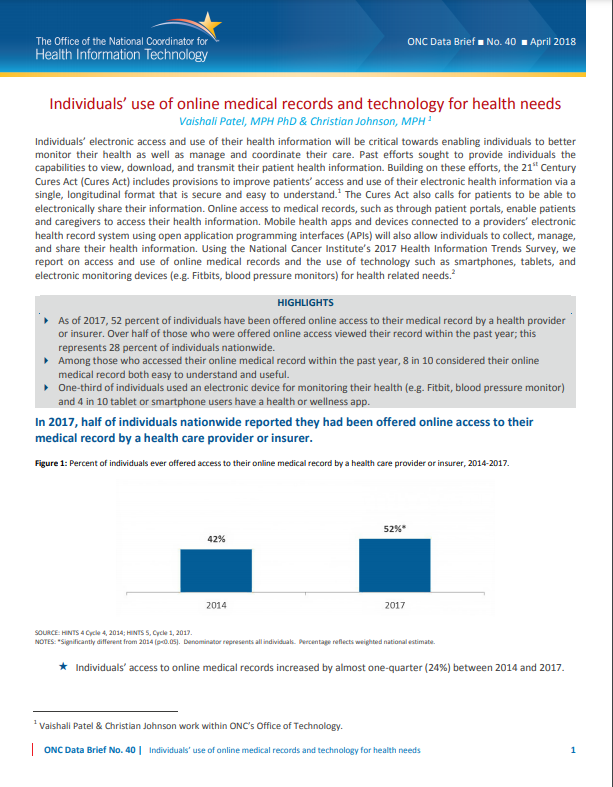
Online access to medical records, such as through patient portals, enable patients and caregivers to access their health information. Mobile health apps and devices connected to a providers' electronic health record system using open…
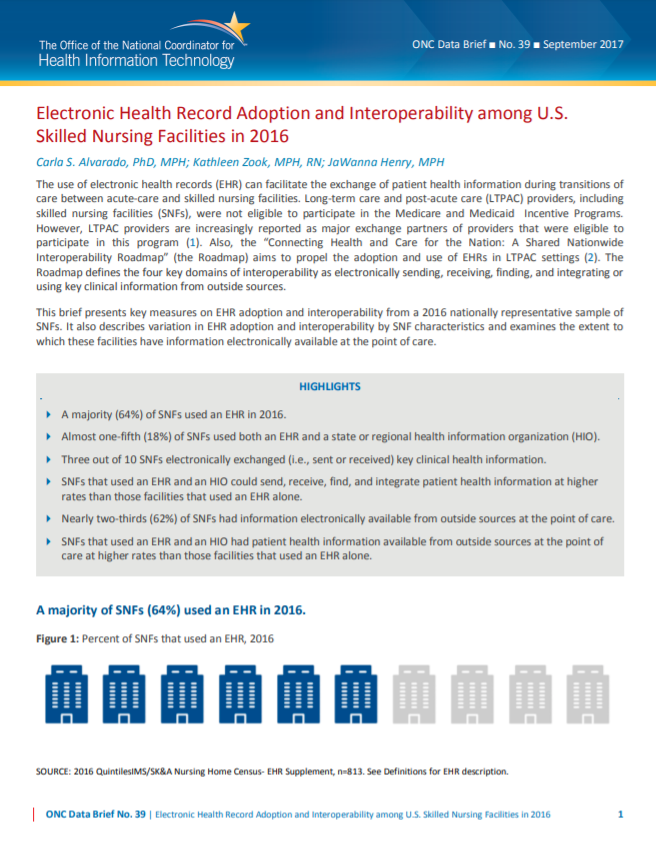
Electronic Health Record Adoption and Interoperability among U.S. Skilled Nursing Facilities in 2016
This data brief presents key measures on EHR adoption and interoperability from a 2016 nationally representative sample of skilled nursing facilities (SNF). It also describes the variation in EHR adoption and interoperability by SNF characteristics…
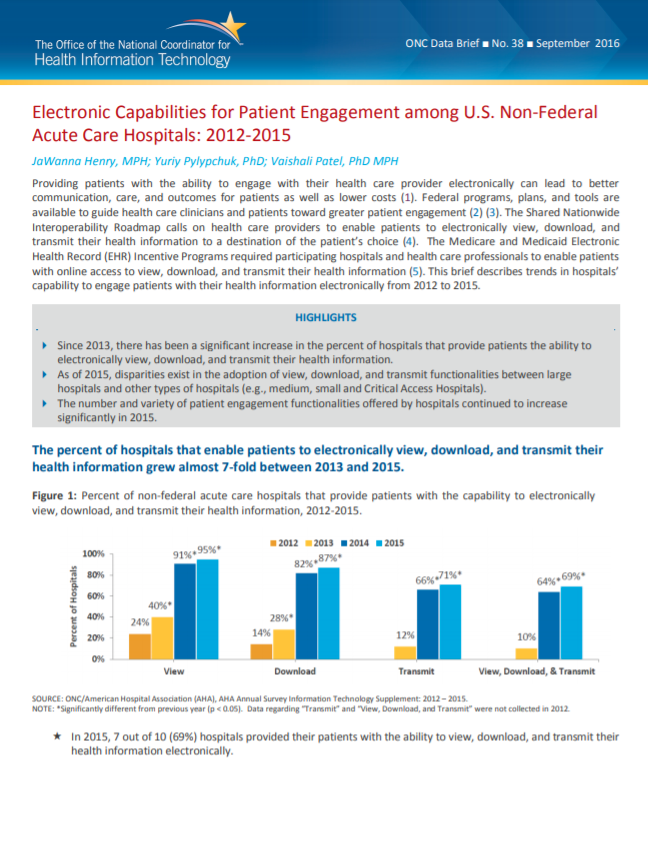
This ONC Data Brief describes trends in hospitals capability to engage patients with their health information electronically from 2012 to 2015. The percent of hospitals that enable patients to electronically view, download, and transmit their health…
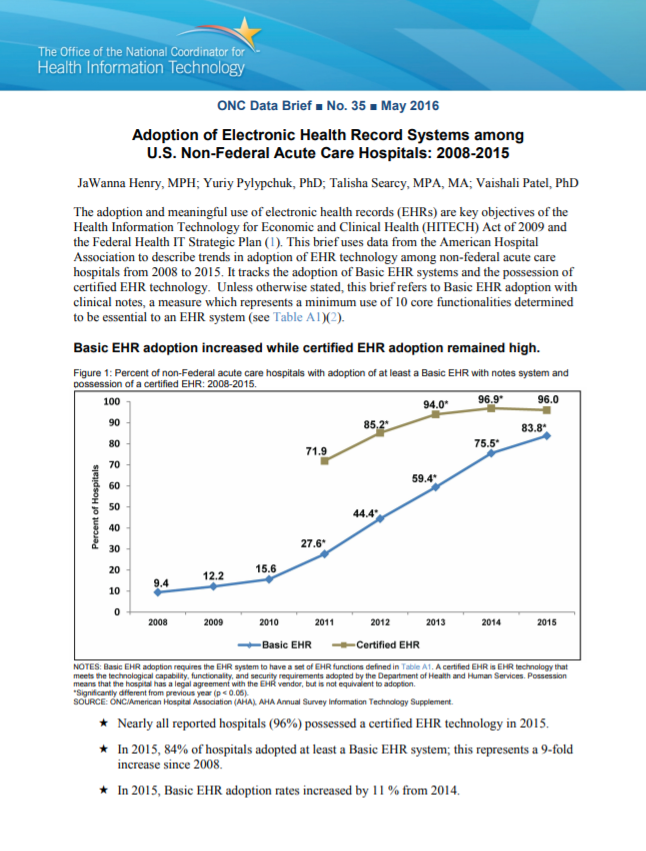
Nearly all hospitals have certified health IT and over 4 in 5 hospitals have at least a Basic EHR. This brief uses data from the American Hospital Association to describe trends in adoption of EHR technology among non-federal acute care hospitals…
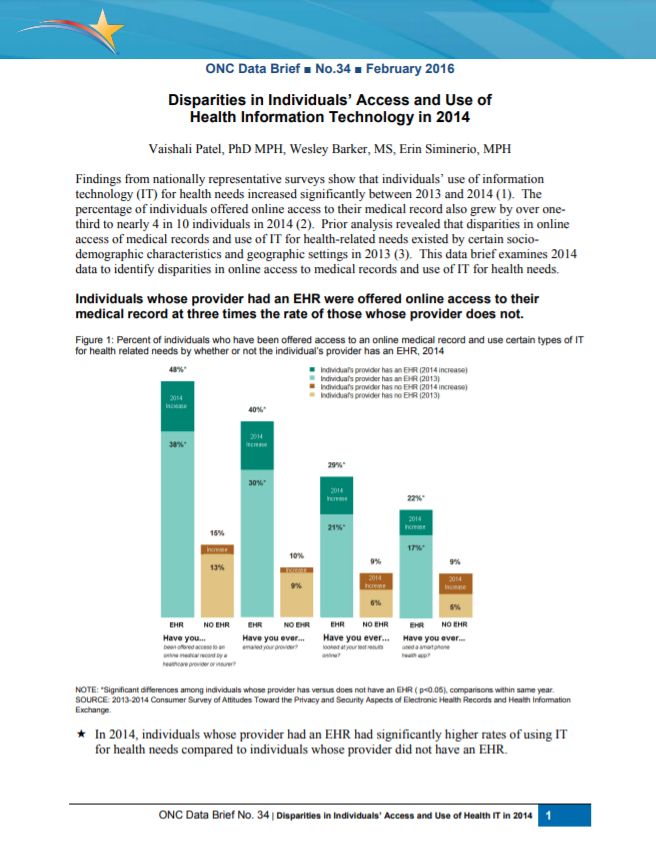
Findings from nationally representative surveys show that individuals' use of information technology (IT) for health needs increased significantly between 2013 and 2014. Prior analysis revealed that disparities in online access of medical…
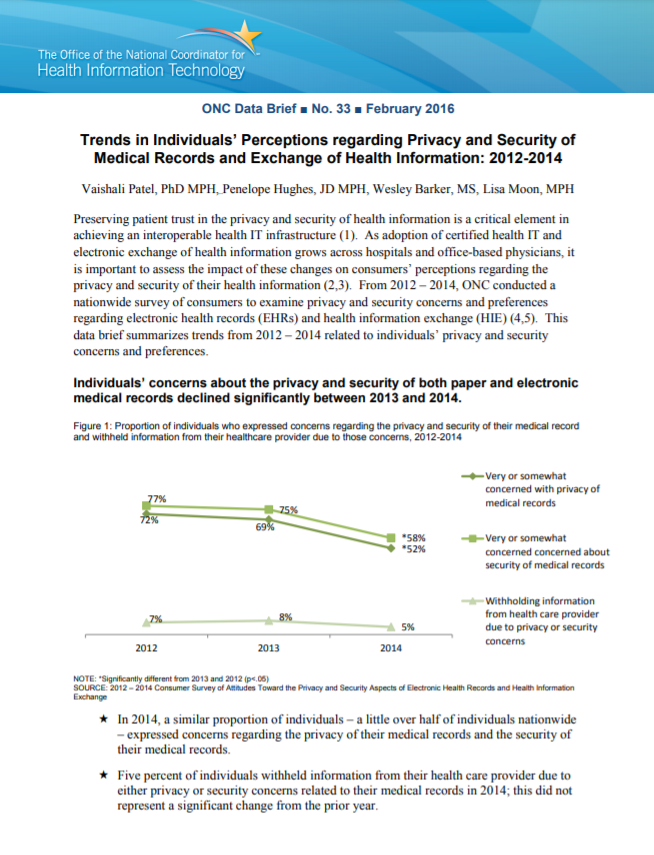
Preserving patient trust in the privacy and security of health information is a critical element in achieving an interoperable health IT infrastructure. As adoption of certified health IT and electronic exchange of health information grows across…
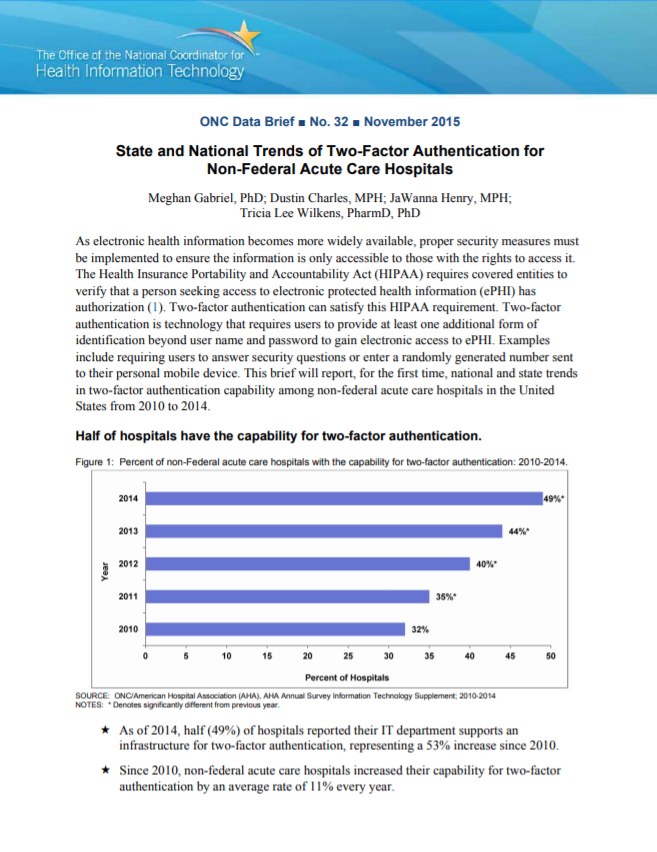
As electronic health information becomes more widely available, proper security measures must be implemented to ensure the information is only accessible to those with the rights to access it. The Health Insurance Portability and Accountability Act…
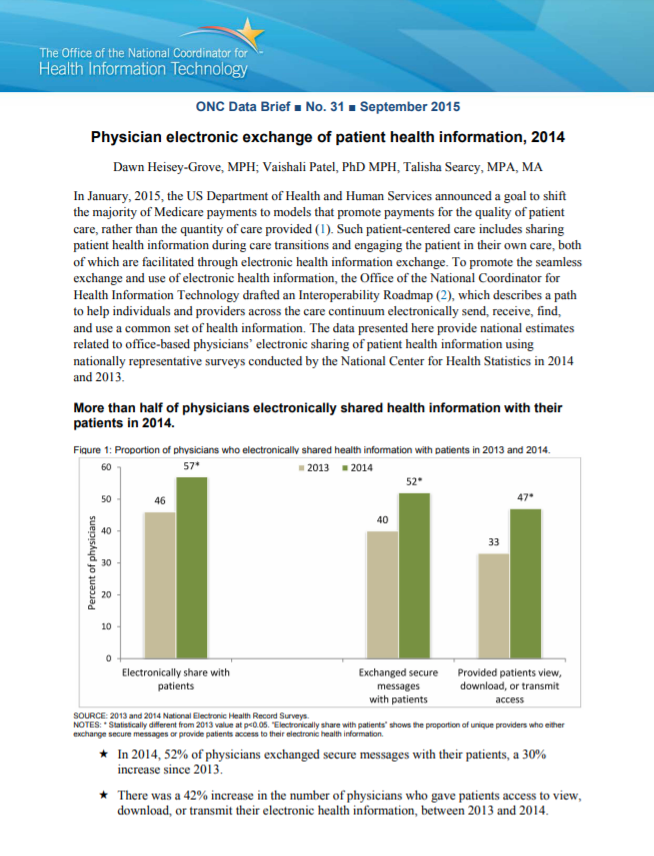
It is a national priority for a majority of individuals and providers along the care continuum to electronically send, receive, find, and use health information by 2017. Patient-centered care includes sharing patient health information during care…

